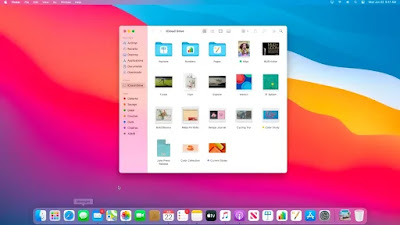I have my suspicions about this change. When I initially heard about Windows 11, through reports of its existence having leaked out, I said I couldn’t care less, as my PC, replaced by an Apple Mac mini earlier this year, was being recycled. Apple had decided to replace its operating system last year, macOS X being replaced by version 11 after nineteen years. With eleven being one more than ten, Microsoft had to respond. My second thought upon the official announcement? “But this Windows goes to 11...”
I remember the scale of the excitement that heralded the introduction of Windows 95 in, well, 1995, the introduction of the “Start” button being underlined in blood by the Rolling Stones song “Start Me Up,” playing on seemingly every TV ad break. This was back when Microsoft was the market for desktop computing, and running your computer on anything other than Windows was either for specialist or industrial purposes, or the act of owning an Apple computer. It would be Microsoft’s investment in Apple stock in 1997, along with introducing Microsoft Office to their computers, that helped to stabilise the then financially troubled company, just as Steve Jobs had returned to run it.
I could be considered an apologist for Apple products, being as I am on my third tablet and fourth phone of theirs in ten years, but the universality of Windows as a computer system, binding together almost the entire desktop computing world, made leaving it for macOS a difficult step that involved much deliberation. I was worried about compatibility issues regarding the twenty years of files I would be moving away from it, potentially being locked out of old work of mine. I then moved, and it ultimately didn’t matter. Even now, comparatively few people use Apple desktop computers, with price an obvious factor, but that base is larger than in 1997, and those that do have been catered for, as proved by my continuing to use Microsoft Word, preferring it over the similar Pages program that Apple provide for free.
What I have been most surprised about is how Windows 11 appears to be attempting to copy the experience of macOS 11. The ability to use Android mobile apps on desktop computers matches Apple’s move to add iOS apps to macOS, allowing me to continue using the video editing app I used on my iPad. Rounding off the edges of the windows themselves, more fluid animations between windows, and moving the taskbar icons from the left to the centre of the screen, is very reminiscent of the startle I received on finding how smooth macOS 11 was to use for the first time, and integration of Teams video calls and Xbox Game Pass is not far away from Apple’s embedded FaceTime and iCloud. Both systems have their own app stores, but all systems do now.
The ubiquity of Microsoft Windows means that moving from PC to Mac means opting out of Windows, so what feels like the moving of the Windows experience towards the Mac experience, instigated by the company that created the notion of having the experience, puzzles me. At the same time, the Mac experience is predicated on staying within a gated community – I moving from PC to Mac, I abandoned anti-virus software to which I was already paid up for the rest of the year, but no longer needed. Windows can be on almost any computer you want, so remaking it to follow one particular computer’s experience proves to me I made the best decision in moving away.





No comments:
Post a Comment